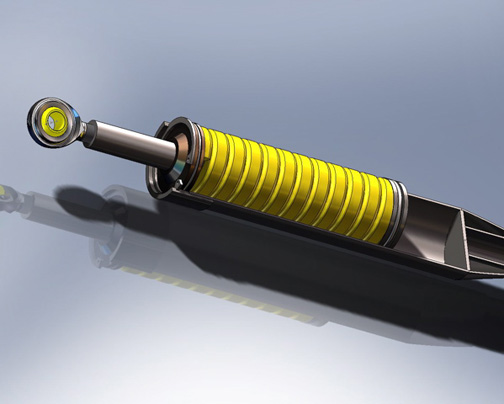
Started July 3, 2005
The landing gear struts are like shock absorbers. There is a heavy spring inside the body of the strut with a piston that slides up and down. The strut is filled with ATF (Automatic Transmission Fluid) which acts as a damper. When you land, the spring is compressed and the piston rises in the body. The ATF flows through a small hole in the piston rod. Since it can't flow through the hole fast, it prevents fast movement of the spring action therefore dampening the spring and keeping it from simply springing you back up into the air again after landing.

Making the shock strut requires a bit of Lathe work but is fairly easy to make.
Here is the main housing of the shock strut:
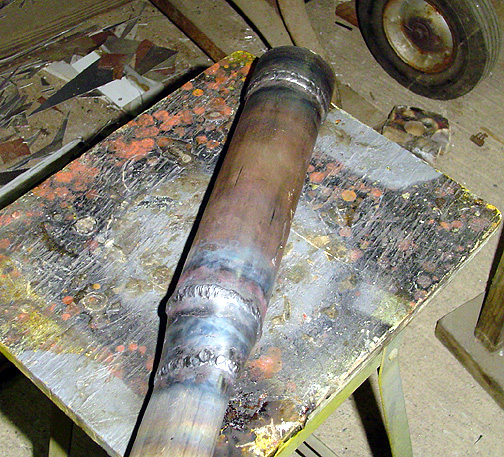
As you can see, a piece of streamline tube is welded to the bottom of the strut housing. This streamline tube will eventually attach to the gear leg at the axle.
The top of the gear strut housing has a groove cut in it for a snap ring.
The cap that holds it all together is made from hard bronze. Here are
the caps for both struts:
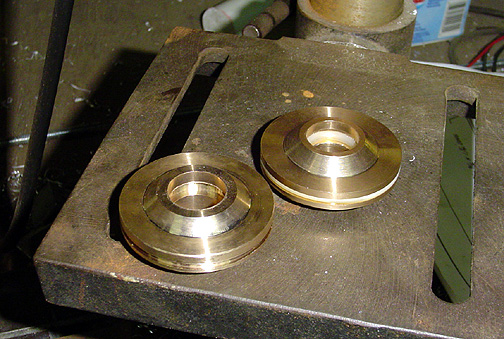
One has the "O" rings already in it. The piston shaft slides in the
through the hole in the middle. The outer "O" ring seals it to the
housing. Here is one of the caps in the shock strut housing:
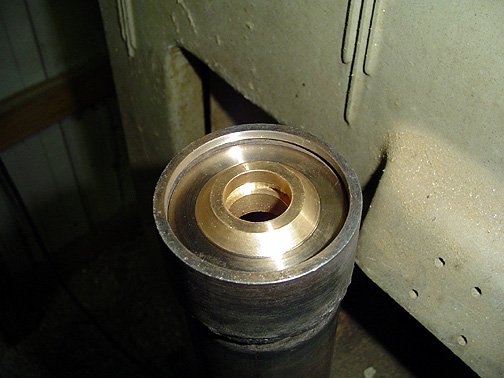
You can see the groove for the snap ring in the housing.
Here is the piston assembly:
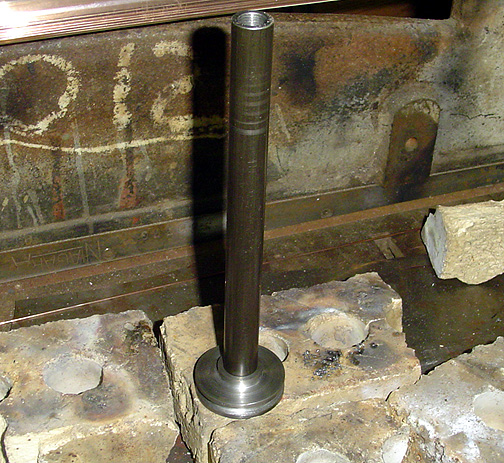
In the above picture, the piston is ready to be welded to the piston shaft. The top of the piston shaft was threaded with a tap for the rod end bearing to screw into it.
Here is a group shot of the Gear Strut parts:
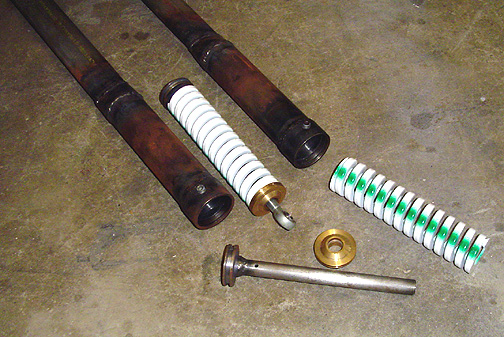
You can see the small hole at the base of the piston rod (near the piston). The piston has an "O" ring sealing it against the housing, so the only place the ATF can flow is through that little hole. That's what provides the dampening or slowing of the spring driven travel.
Click here to go to Landing Gear Struts page 2